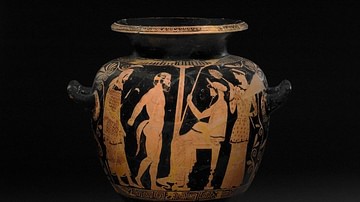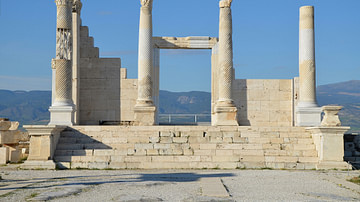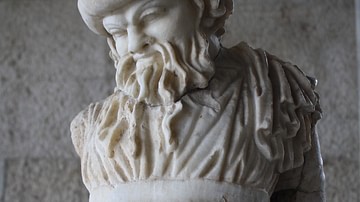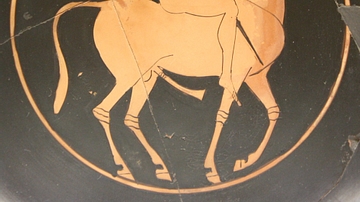
Gordium was the capital of ancient Phrygia, modern Yassihüyük. It is situated on the place where the ancient Royal road between Lydia and Assyria/Babylonia crosses the river Sangarius, which flows from central Anatolia to the Black Sea. Remains of the road are still visible. In the ninth century BCE, the city became the capital of the Phrygians, a Thracian tribe that had invaded and settled in Asia. They created a large kingdom that occupied the greater part of Turkey west of the river Halys.
The kings of Phrygia built large tombs near Gordium. These wooden chambers were covered by artificial hills that are usually called tumuli. There are about eighty of them; forty have been investigated by archaeologists, and turn out to cover the period from the eighth to the first century BCE.
In the eighth century, the citadel was fortified and in the next century, the town became very large indeed. A palace was built in the citadel. To the south of it was a lower city, and a large suburb was to be found on the other bank of the Sangarus.
The most famous king of Phrygia was Midas, who is little more than a name to us. However, contemporary Assyrian refer to a Mit-ta-a, king of Muški. If he is identical to the legendary Midas - which is contested - he cooperated with the rulers of Tyana, Karkemiš, Gurgum, and Malida against the Assyrian king Sargon II, but was attacked by a nomadic tribe called Cimmerians. In 710/709, Midas was forced to ask for help from Sargon. This did not prevent the Cimmerian invasion. Another source, the Chronicle of Eusebius, tells us that the legendary Midas died in 695 - he may have committed suicide after a lost battle. There are traces of destruction at Gordium, but they may be older than the attack by the Cimmerians - and, again, it is unclear whether Muški is identical to Phrygia amd Mit-ta-a to Midas.

The "mound of Midas", the greatest tumulus near Gordium, was excavated in 1957. Its diameter is a little short of 300 meters and it is 43 meters high. In the wooden chamber, which measured 5 x 6 meters, a man's corpse was found, and even the contents of his last dinnerr could be reconstructed. The tumulus also contained one of the oldest alphabetic inscriptions outside Phoenicia (c.740 BCE).
After half a century of confusion, western Turkey was reunited by the Lydians, whose first great king was Gyges (c.680-c.644). During the reign of one of his successors, Alyattes (c. 600-560), the wall of the citadel was rebuilt, while a massive fortress was built on a hill next to it. From this moment on, Greek ceramics became fashionable: initially from the Ionian cities, later also from Laconia, and especially Athens.
When Lydia was conquered by the Persian king Cyrus the Great and its last king Croesus killed (after 547), a Persian garrison took possession of this fortress. Gordium was now included in the satrapy of Greater Phrygia. Ceramics from this period sometimes imitate Achaemenid silver vessels, while the town appears to have exported textile.
The garrison stayed there until the last months of 334, when the Macedonian commander Parmenion captured the city. During the winter, his king Alexander the Great joined him. (Go here for the famous story about Alexander cutting the Gordian knot in the palace.)
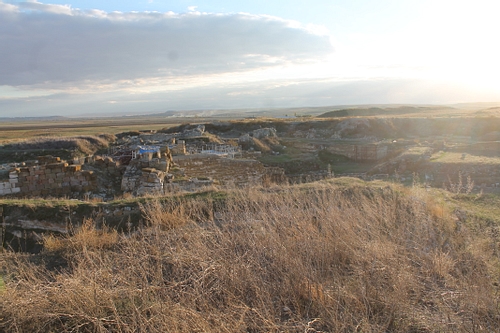
After the troubles following the death of Alexander in 323, Gordium was first ruled by Antigonus, then by the Seleucid kings of Asia, then by the Celts (the remains of their human sacrifices have been found), then by the Attalid rulers of Pergamon, and eventually by the Romans.
It remained one of the most important commercial centers in the region, still producing textiles. However, the size of the city itself diminished. The old center - citadel and lower town - was abandoned after the Roman conquest in 189 BCE; only the western suburbs remained occupied. (From the first until the fourth century CE, part of the citadel was again in use.) Gordium was still in existence in the sixth century, and was probably called Vindia, which suggests that people no longer remembered its Phrygian past.
